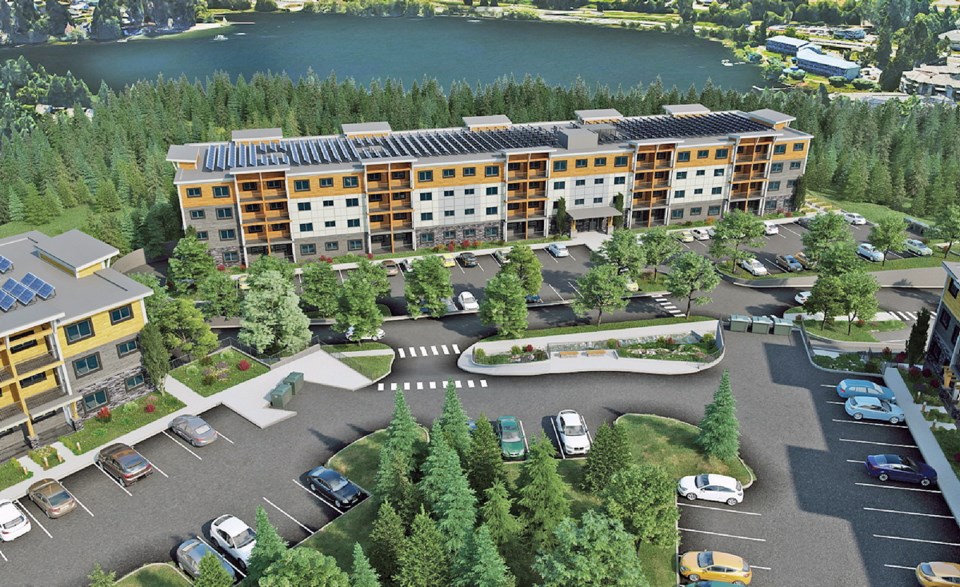New private developments with a total of 343 residential units were approved this week by Nanaimo council as developers respond to strong demand amid a housing shortage in the Harbour City.
“We have a duty and a responsibility to ensure that people do in fact have places to rent,” Mayor Leonard Krog said when speaking in favour of a 170-unit project at 4800 Cedar Ridge Place. “If these things aren’t built, rents stay high, people can’t move here, particularly those who can’t afford to purchase right off the bat.”
A development permit was also approved for a 120-unit rental building at 4745 Ledgerwood Rd. The application from West Urban Development Ltd. was on behalf of 115976 B.C. Ltd.
Council also okayed a development permit for 6010 Hammond Bay Rd. where a four-storey, 53-unit multi-family project is planned by 6010 Hammond Bay Holdings.
More than 1,000 units have been approved in Nanaimo so far this year, and building-permit values for the first five months of this year have already hit nearly $255 million — ahead last year’s entire total of $216 million.
This year’s permits show that 1,041 new residential units are planned so far, said Dale Lindsay, Nanaimo’s director of community development. The most recent projects approved and new ones expected to be proposed will increase that number.
Last year, 60 per cent of the multi-family residential projects were purpose-built rental, which is picking up in Nanaimo after decades of virtually no construction of that type of housing.
In Victoria, council members are mulling over a proposal to require that 20 per cent of units be “affordable” for strata developments with 60 units or more.
Krog, speaking for himself and not council, said: “Those kinds of solutions, which are always proposed during a time of crisis, over the longer haul, create another set of problems.”
Housing for homeless people is needed now and that’s the responsibility of senior government, Krog said. Nanaimo’s private sector is busy building condominiums and rental units, but Krog said he isn’t convinced that it will continue to be active if the city proposed or implemented some of the solutions Victoria is contemplating.
A requirement for a percentage of units to be affordable would cut into profits, Krog said.
“I would want to approach it very carefully before we considered something like that. Because every time we play in the marketplace, you have to consider the longer-term consequences as well.”
Highstreet Ventures of Kelowna saw its development permit approved this week for its four-building project on Cedar Ridge, totalling 179,207 square feet in the Long Lake area.
Krog acknowledged neighbourhood concerns about heavier traffic on nearby Rutherford Road, but said Nanaimo will continue to grow. “This is a problem that we are going to have to face in every part of this community.”
One building will be four storeys, two will be three storeys and one will be two storeys. Highstreet agreed to move one three-storey building about 40 feet back from the property line. Area resident Malcolm Threadgill remains worried his adjacent house on Salal Drive will be in shadow up to four and a half months.
Natalie Watt is among local residents concerned about the impact of blasting required on the rocky site, fearing that structural damage could occur over the long term.
Coun. Sheryl Armstrong has a “huge issue with the amount of traffic” in that neighbourhood as vehicles travel along Rutherford Road, and voted against the plan, along with Coun. Ian Thorpe.
Highstreet president Scott Butler said the project, aimed at the middle market, may achieve a higher level than required by B.C.’s step code, designed for energy savings during construction and ongoing energy efficiency once a building is finished. It is designed to be 100 per cent net zero, meaning it will generate as much energy as it consumes.
Solar panels will generate 288 kilowatts, Butler said.
The project “might be the largest solar panel installation on Vancouver Island,” he said. “It is a massive installation. We basically blanket the roof on every building with solar panels.
Other features include LED lighting, triple-pane windows, a vehicle for a car share program, and the ability to plug in electric vehicles into parkades.



